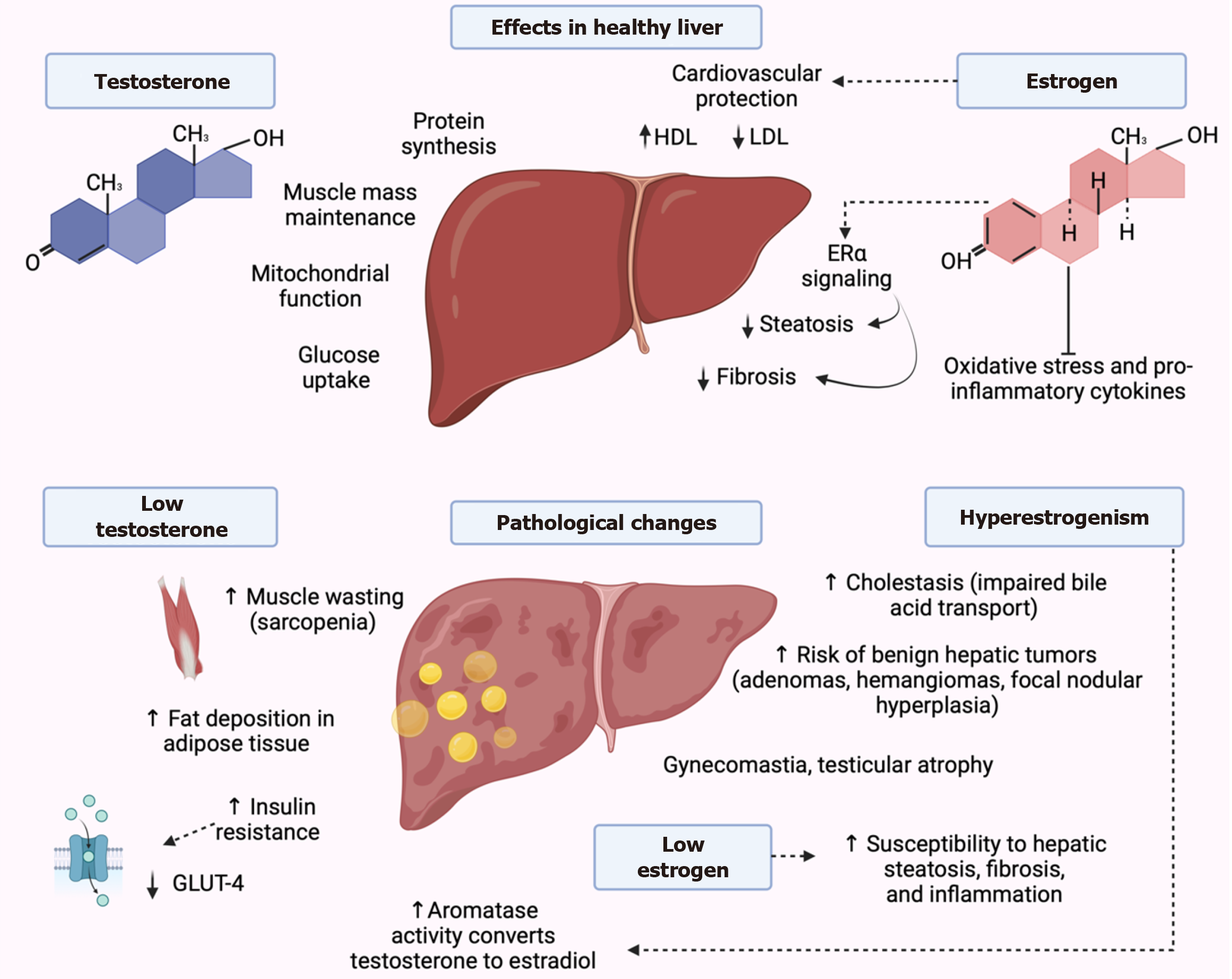Copyright
©The Author(s) 2025.
World J Gastroenterol. Aug 28, 2025; 31(32): 108827
Published online Aug 28, 2025. doi: 10.3748/wjg.v31.i32.108827
Published online Aug 28, 2025. doi: 10.3748/wjg.v31.i32.108827
Figure 5 Molecular interplay between sex hormones and liver pathology.
Testosterone promotes protein synthesis, mitochondrial function, and glucose uptake via androgen receptor activation, supporting muscle mass and metabolic homeostasis. In cirrhosis, reduced testosterone levels lead to sarcopenia, insulin resistance, and increased adiposity. Additionally, elevated aromatase activity enhances the conversion of testosterone to estradiol, contributing to hyperestrogenism. Estrogens, through estrogen receptors (ER) α, ERβ, and G-protein-coupled ER, regulate lipid metabolism, enhance high-density lipoprotein, reduce low-density lipoprotein, and activate antioxidant and anti-inflammatory pathways, protecting against steatosis and fibrosis. However, excess estrogen in advanced liver disease is linked to cholestasis, benign hepatic tumors, and feminizing features such as gynecomastia and testicular atrophy. Low estrogen levels, conversely, are associated with increased hepatic fat accumulation, fibrosis, and inflammation. These interactions emphasize the importance of hormonal balance in maintaining liver health and mitigating progression of liver disease. GLUT-4: Glucose transporter type 4; HDL: High-density lipoprotein; LDL: Low-density lipoprotein; ERα: Estrogen receptor α.
- Citation: Vargas-Beltran AM, Armendariz-Pineda SM, Martínez-Sánchez FD, Martinez-Perez C, Torre A, Cordova-Gallardo J. Interplay between endocrine disorders and liver dysfunction: Mechanisms of damage and therapeutic approaches. World J Gastroenterol 2025; 31(32): 108827
- URL: https://www.wjgnet.com/1007-9327/full/v31/i32/108827.htm
- DOI: https://dx.doi.org/10.3748/wjg.v31.i32.108827









